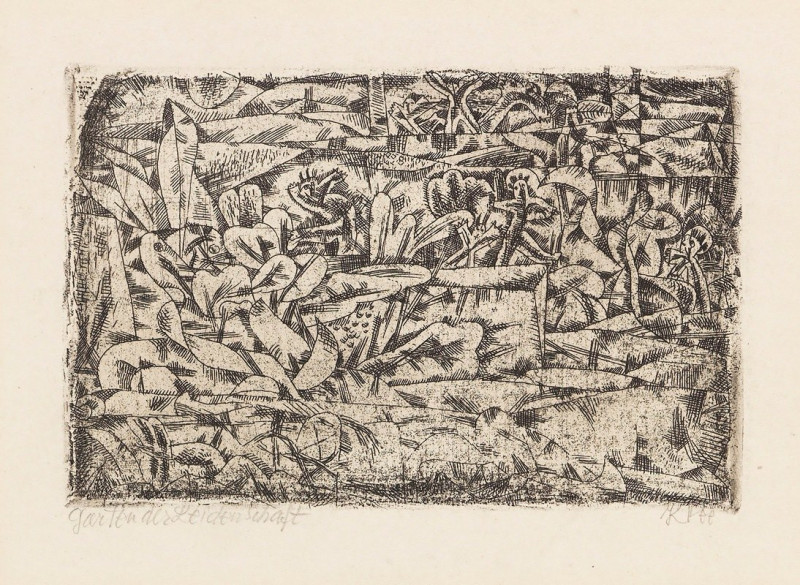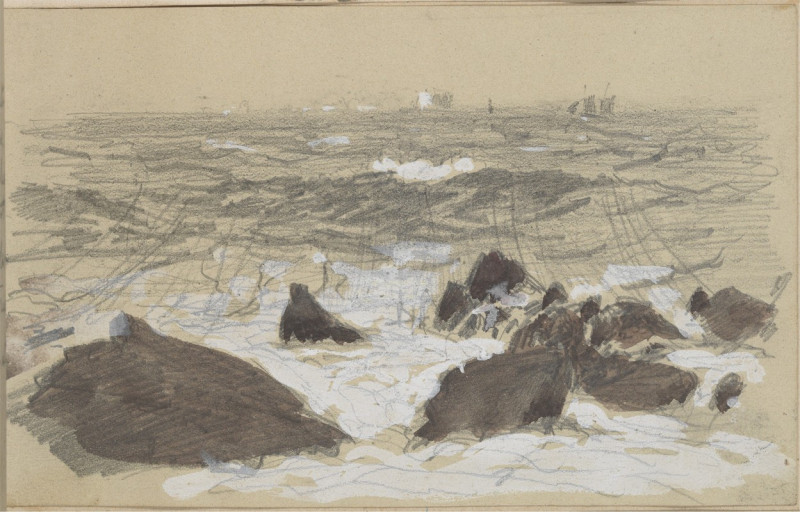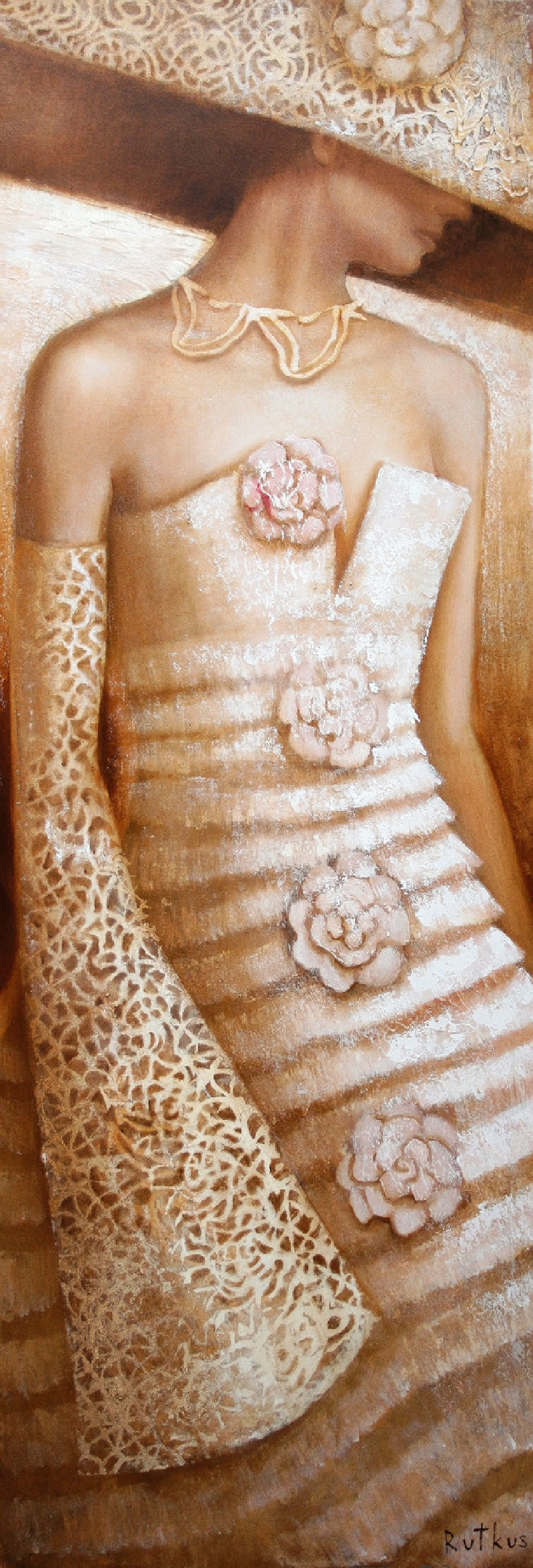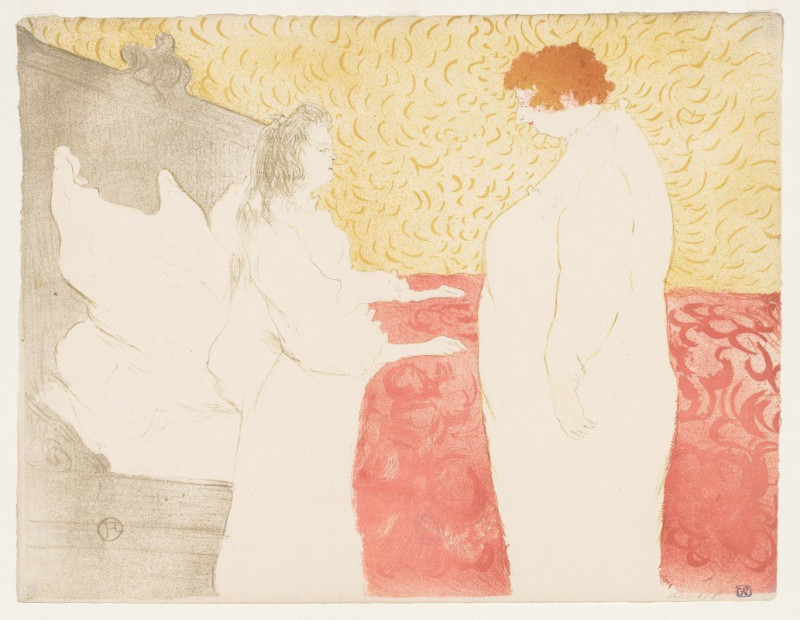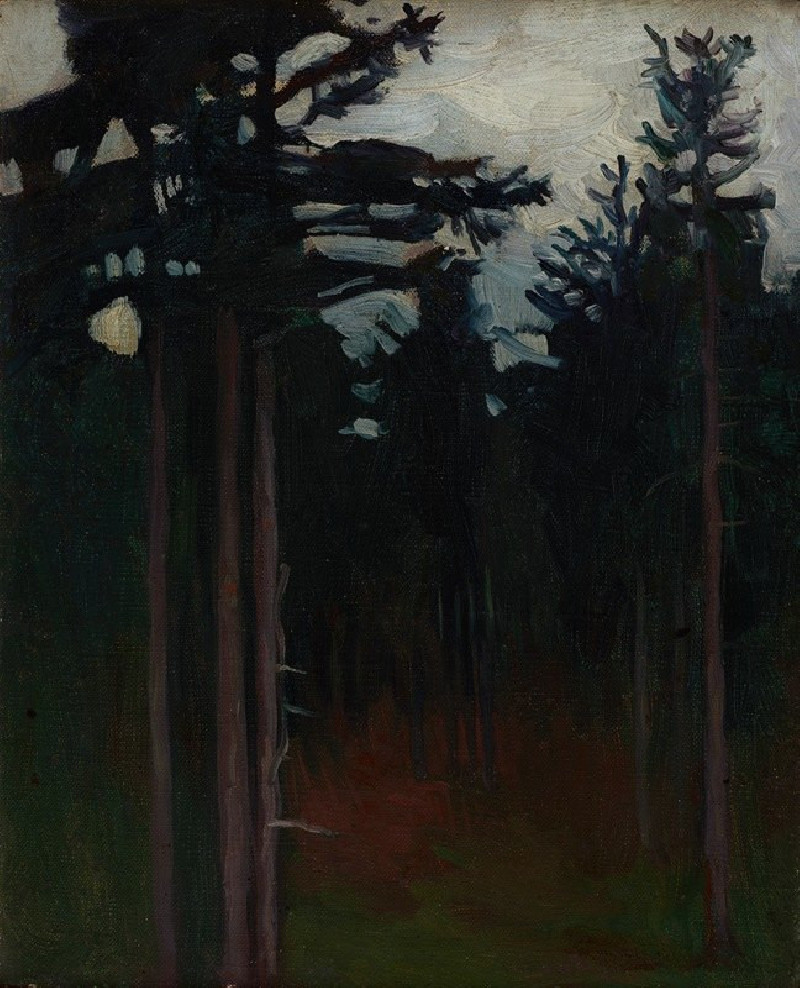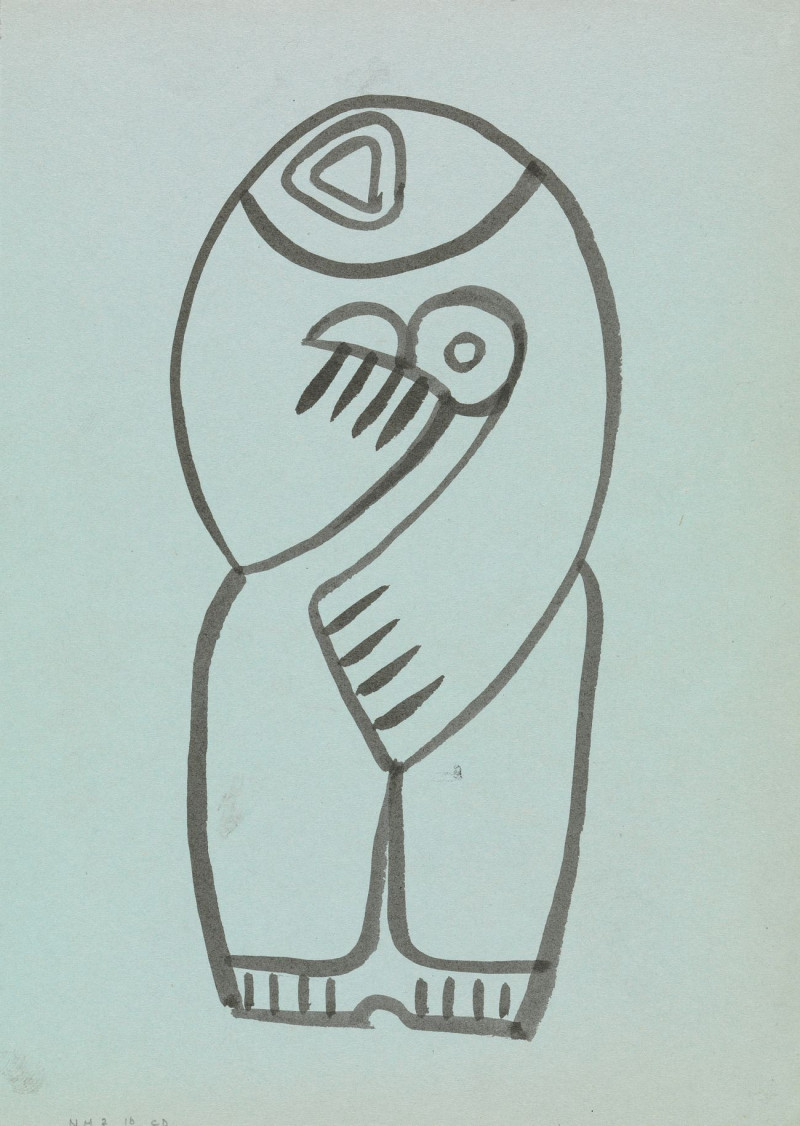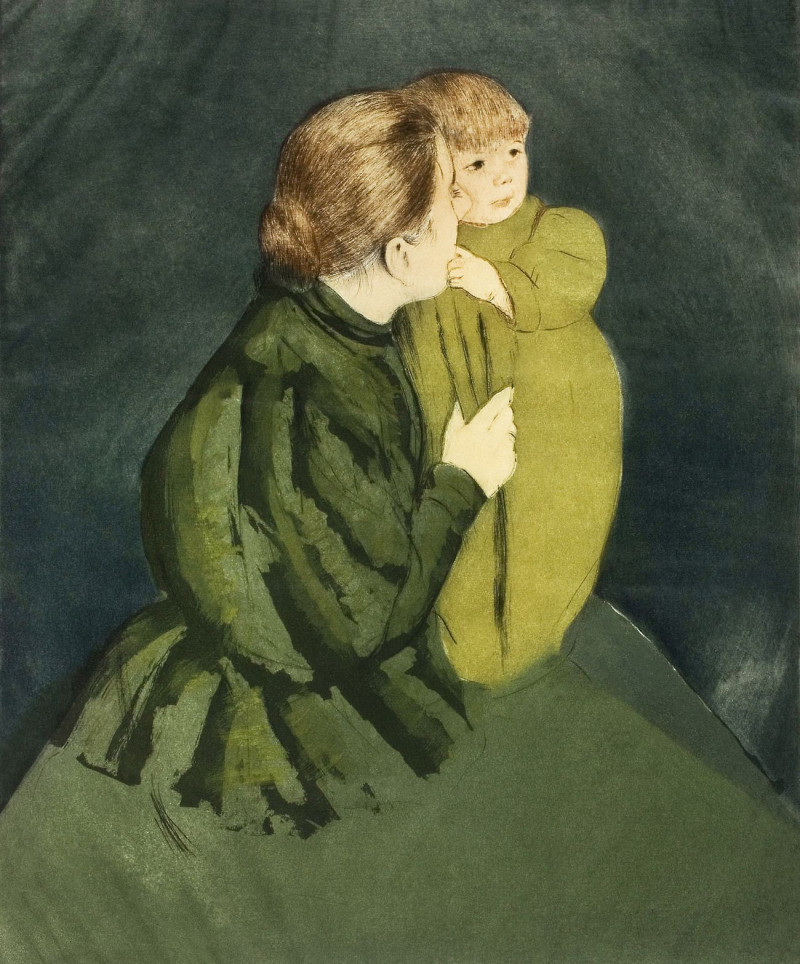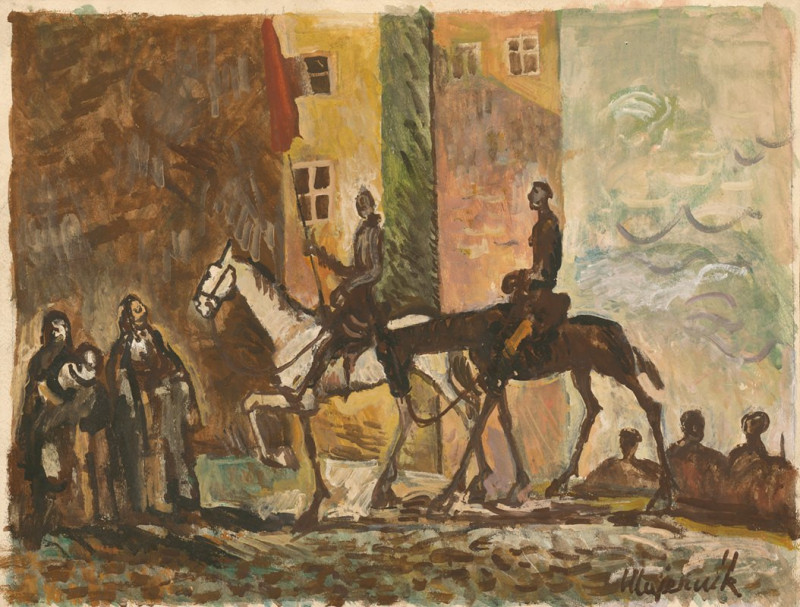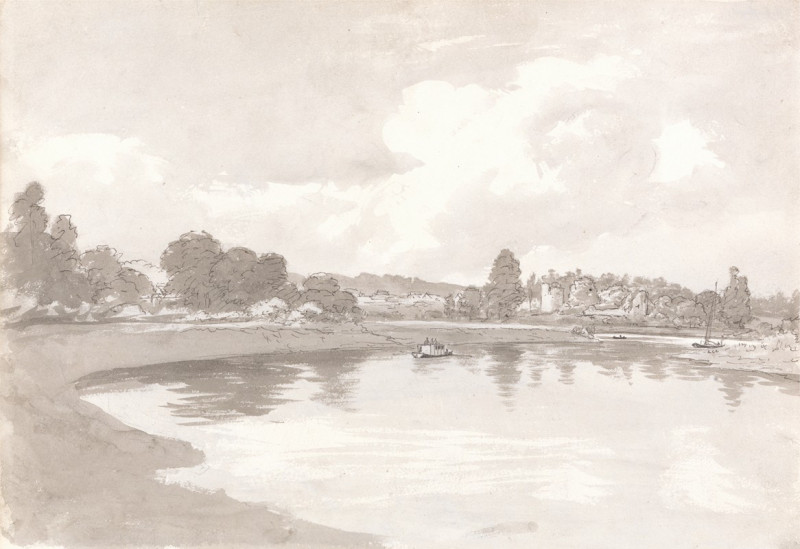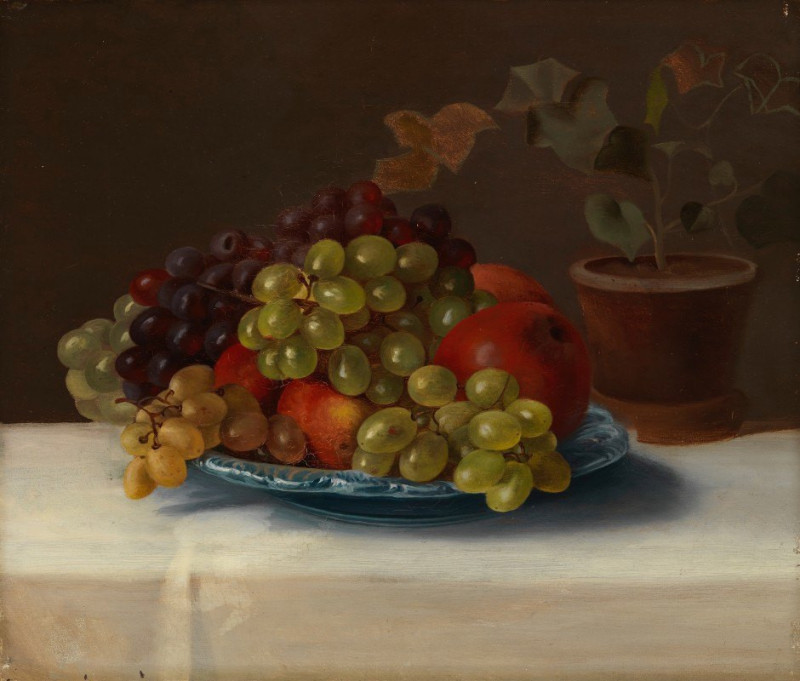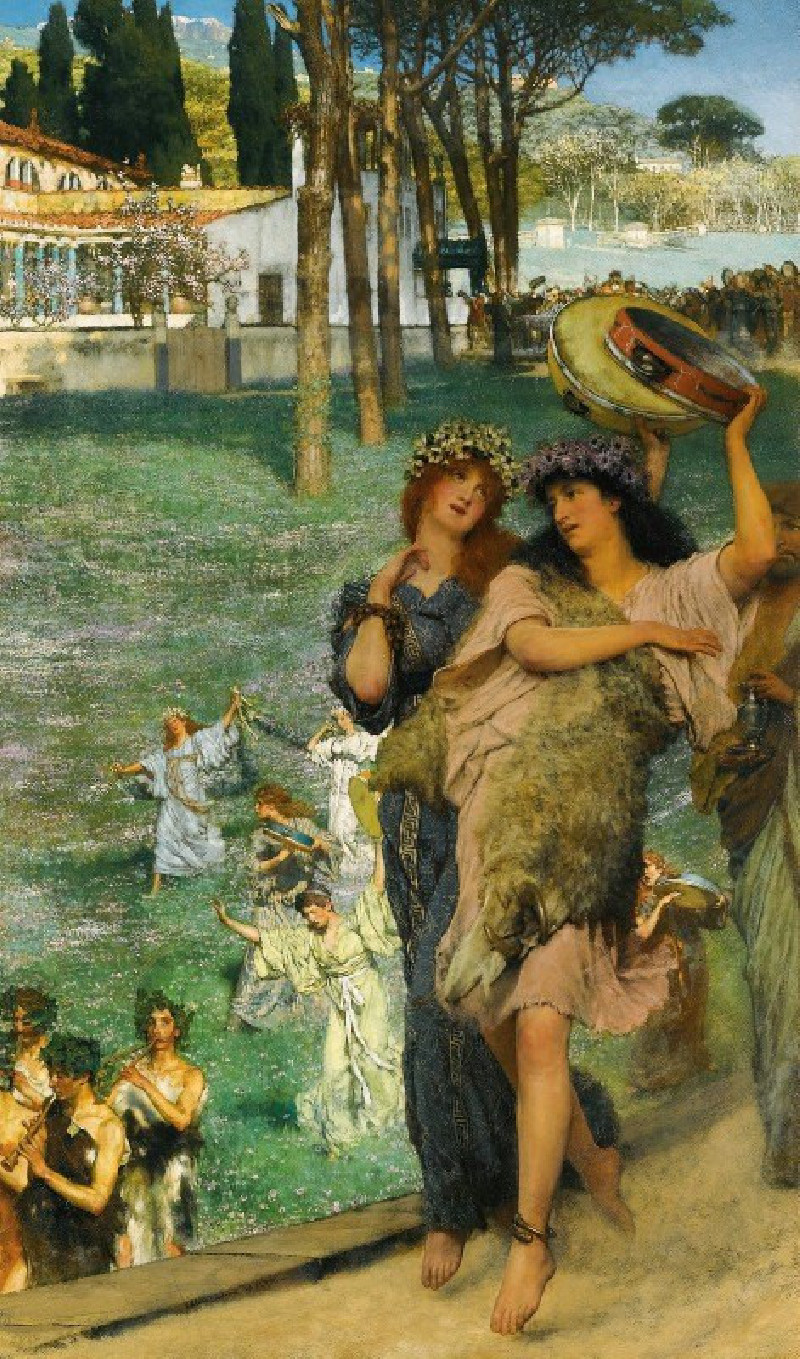Garten der Leidenschaft (1913)
Technique: Giclée quality print
Recommended by our customers
More about this artwork
Paul Klee’s "Garten der Leidenschaft" (Garden of Passion), created in 1913, showcases the artist's distinctive style and graphic mastery through the medium of printmaking. This etching invites viewers into a visually complex world that blurs the lines between the natural and the abstract.Upon observing the artwork, one is immediately struck by the dense composition and the detailed interweaving of forms and lines. Klee's garden is not merely a collection of plant life, but a labyrinth of organic shapes and patterns that seem to pulsate with life. The imagery is tightly packed, creating an almost overwhelming sense of depth and movement. Each element within the composition competes for attention, yet simultaneously contributes to a harmonious whole.The title, "Garden of Passion," suggests an intensity and fervor that is aptly represented in the tangled vines, robust blooms, and dynamic textures. This garden appears as a metaphorical space—one that is alive with emotional and creative energy, reflecting Klee's interest in symbolism and the inner experiences of the mind.Klee’s use of monochromatic tones emphasizes the play of light and shadow, adding a dramatic flair to the intricacies of the garden. Every etched line is deliberate, contributing to the overall texture and rhythm of the piece. It is a vivid portrayal of nature not only seen through the eyes but felt through the soul.This piece is perfect for those who appreciate art that challenges the viewer to look closely and continuously discover new details and meanings.
Delivery
Returns
Paul Klee was a Swiss-born German artist. His highly individual style was influenced by movements in art that included expressionism, cubism, and surrealism. Klee was a natural draftsman who experimented with and eventually deeply explored color theory, writing about it extensively; his lectures Writings on Form and Design Theory (Schriften zur Form und Gestaltungslehre), published in English as the Paul Klee Notebooks, are held to be as important for modern art as Leonardo da Vinci's A Treatise on Painting for the Renaissance.

